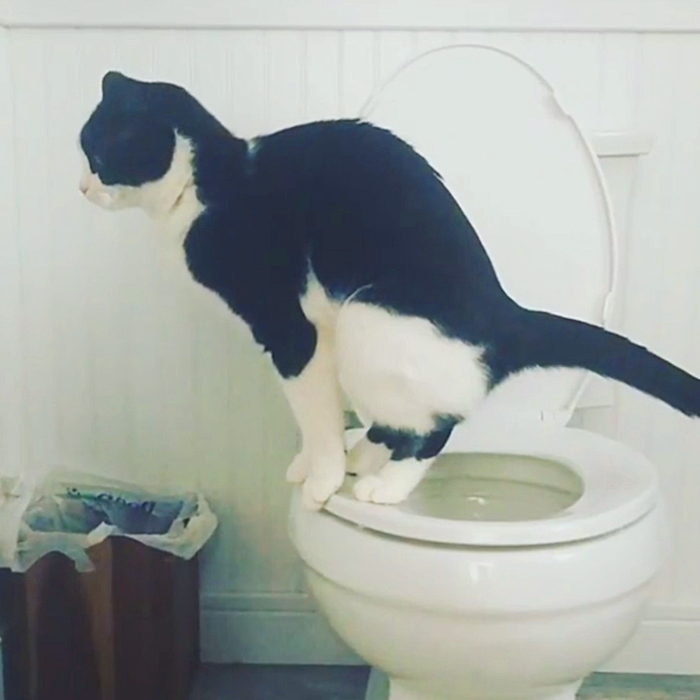Dangers of Flushing Cat Poop in Your Toilet - Preventive Measures
Dangers of Flushing Cat Poop in Your Toilet - Preventive Measures
Blog Article
Are you currently trying to find advice about Can You Flush Cat Poop Down The Toilet??

Introduction
As cat proprietors, it's essential to be mindful of exactly how we dispose of our feline good friends' waste. While it might appear convenient to flush cat poop down the bathroom, this practice can have detrimental consequences for both the atmosphere and human health and wellness.
Environmental Impact
Flushing feline poop introduces damaging microorganisms and parasites into the water system, posturing a substantial danger to water environments. These pollutants can adversely impact aquatic life and compromise water top quality.
Health and wellness Risks
In addition to environmental worries, purging feline waste can additionally position wellness risks to humans. Feline feces might contain Toxoplasma gondii, a parasite that can cause toxoplasmosis-- a potentially serious health problem, especially for expecting women and individuals with weakened immune systems.
Alternatives to Flushing
The good news is, there are more secure and extra accountable means to throw away cat poop. Think about the adhering to alternatives:
1. Scoop and Dispose in Trash
The most typical technique of dealing with feline poop is to scoop it right into an eco-friendly bag and toss it in the garbage. Make certain to use a dedicated litter scoop and get rid of the waste quickly.
2. Usage Biodegradable Litter
Go with eco-friendly pet cat trash made from materials such as corn or wheat. These litters are environmentally friendly and can be securely disposed of in the garbage.
3. Bury in the Yard
If you have a backyard, think about burying pet cat waste in an assigned area far from veggie gardens and water resources. Make sure to dig deep enough to stop contamination of groundwater.
4. Mount a Pet Waste Disposal System
Invest in a pet dog waste disposal system specifically created for cat waste. These systems use enzymes to break down the waste, lowering odor and environmental influence.
Conclusion
Responsible family pet possession extends beyond supplying food and sanctuary-- it also involves appropriate waste administration. By avoiding purging pet cat poop down the bathroom and choosing different disposal methods, we can reduce our environmental footprint and safeguard human health and wellness.
Why Can’t I Flush Cat Poop?
It Spreads a Parasite
Cats are frequently infected with a parasite called toxoplasma gondii. The parasite causes an infection called toxoplasmosis. It is usually harmless to cats. The parasite only uses cat poop as a host for its eggs. Otherwise, the cat’s immune system usually keeps the infection at low enough levels to maintain its own health. But it does not stop the develop of eggs. These eggs are tiny and surprisingly tough. They may survive for a year before they begin to grow. But that’s the problem.
Our wastewater system is not designed to deal with toxoplasmosis eggs. Instead, most eggs will flush from your toilet into sewers and wastewater management plants. After the sewage is treated for many other harmful things in it, it is typically released into local rivers, lakes, or oceans. Here, the toxoplasmosis eggs can find new hosts, including starfish, crabs, otters, and many other wildlife. For many, this is a significant risk to their health. Toxoplasmosis can also end up infecting water sources that are important for agriculture, which means our deer, pigs, and sheep can get infected too.
Is There Risk to Humans?
There can be a risk to human life from flushing cat poop down the toilet. If you do so, the parasites from your cat’s poop can end up in shellfish, game animals, or livestock. If this meat is then served raw or undercooked, the people who eat it can get sick.
In fact, according to the CDC, 40 million people in the United States are infected with toxoplasma gondii. They get it from exposure to infected seafood, or from some kind of cat poop contamination, like drinking from a stream that is contaminated or touching anything that has come into contact with cat poop. That includes just cleaning a cat litter box.
Most people who get infected with these parasites will not develop any symptoms. However, for pregnant women or for those with compromised immune systems, the parasite can cause severe health problems.
How to Handle Cat Poop
The best way to handle cat poop is actually to clean the box more often. The eggs that the parasite sheds will not become active until one to five days after the cat poops. That means that if you clean daily, you’re much less likely to come into direct contact with infectious eggs.
That said, always dispose of cat poop in the garbage and not down the toilet. Wash your hands before and after you clean the litter box, and bring the bag of poop right outside to your garbage bins.
https://trenchlesssolutionsusa.com/why-cant-i-flush-cat-poop/

I recently found that blog entry on Don’t flush cat feces down the toilet while doing a lookup on the internet. So long as you liked our blog post if you please don't forget to pass it around. Thanks so much for your time spent reading it.
Click Here Report this page